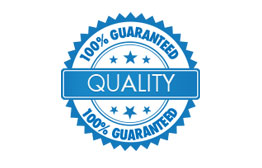Anti-ARTEMIS (DCLRE1C DNA cross-link repair 1C) [GOAT] Antibody
ARTEMIS Antibody
- SPECIFICATION
- CITATIONS
- PROTOCOLS
- BACKGROUND
| Host | Goat |
|---|---|
| Conjugate | Unconjugated |
| Target Species | Human |
| Reactivity | Human |
| Clonality | Polyclonal |
Application
| WB, IHC, E, I, LCI |
| Application Note | This affinity purified antibody has been tested for use in ELISA, immunohistochemistry and western blotting. Reactivity in other immunoassays is unknown. This antibody detects a band of approximately 90 kDa (predicted molecular weight: 78 kDa). |
| Physical State | Liquid (sterile filtered) |
| Buffer | 0.02 M Potassium Phosphate, 0.15 M Sodium Chloride, pH 7.2 |
| Immunogen | This affinity purified antibody was prepared from whole goat serum produced by repeated immunizations with a synthetic peptide corresponding an internal region of Human ARTEMIS (DCLRE1C DNA cross-link repair 1C). |
| Preservative | 0.01% (w/v) Sodium Azide |
| Gene ID | 64421 |
|---|---|
| Other Names | 64421 |
| Purity | This is an affinity purified antibody produced by immunoaffinity chromatography using the immunizing peptide after immobilization to a solid phase. This antibody detects a band of the appropriate size in a number of different cell lines. However, it does not detect a band in cell lines that do not express artemis, such as the cell line CJ (see figure) and in an hTERT line (not shown). |
| Storage Condition | Store vial at -20° C prior to opening. Aliquot contents and freeze at -20° C or below for extended storage. Avoid cycles of freezing and thawing. Centrifuge product if not completely clear after standing at room temperature. This product is stable for several weeks at 4° C as an undiluted liquid. Dilute only prior to immediate use. |
| Precautions Note | This product is for research use only and is not intended for therapeutic or diagnostic applications. |
| Name | DCLRE1C (HGNC:17642) |
|---|---|
| Function | Nuclease involved in DNA non-homologous end joining (NHEJ); required for double-strand break repair and V(D)J recombination (PubMed:11336668, PubMed:11955432, PubMed:12055248, PubMed:14744996, PubMed:15071507, PubMed:15574326, PubMed:15936993). Required for V(D)J recombination, the process by which exons encoding the antigen-binding domains of immunoglobulins and T-cell receptor proteins are assembled from individual V, (D), and J gene segments (PubMed:11336668, PubMed:11955432, PubMed:14744996). V(D)J recombination is initiated by the lymphoid specific RAG endonuclease complex, which generates site specific DNA double strand breaks (DSBs) (PubMed:11336668, PubMed:11955432, PubMed:14744996). These DSBs present two types of DNA end structures: hairpin sealed coding ends and phosphorylated blunt signal ends (PubMed:11336668, PubMed:11955432, PubMed:14744996). These ends are independently repaired by the non homologous end joining (NHEJ) pathway to form coding and signal joints respectively (PubMed:11336668, PubMed:11955432, PubMed:14744996). This protein exhibits single-strand specific 5'-3' exonuclease activity in isolation and acquires endonucleolytic activity on 5' and 3' hairpins and overhangs when in a complex with PRKDC (PubMed:11955432, PubMed:15071507, PubMed:15574326, PubMed:15936993). The latter activity is required specifically for the resolution of closed hairpins prior to the formation of the coding joint (PubMed:11955432). Also required for the repair of complex DSBs induced by ionizing radiation, which require substantial end-processing prior to religation by NHEJ (PubMed:15456891, PubMed:15468306, PubMed:15574327, PubMed:15811628). |
| Cellular Location | Nucleus |
| Tissue Location | Ubiquitously expressed, with highest levels in the kidney, lung, pancreas and placenta (at the mRNA level). Expression is not increased in thymus or bone marrow, sites of V(D)J recombination |

Thousands of laboratories across the world have published research that depended on the performance of antibodies from Abcepta to advance their research. Check out links to articles that cite our products in major peer-reviewed journals, organized by research category.
info@abcepta.com, and receive a free "I Love Antibodies" mug.
Provided below are standard protocols that you may find useful for product applications.
Background
Artemis has a role in T and B lymphocyte immunodeficiency and in predisposition to lymphoma through the NHEJ pathway of DNA repair. DNA-PKcs regulates Artemis by both phosphorylation and complex formation to permit enzymatic activities that are critical for the hairpin-opening step of V(D)J recombination and for the 5' and 3' overhang processing in non-homologous DNA end joining.
If you have used an Abcepta product and would like to share how it has performed, please click on the "Submit Review" button and provide the requested information. Our staff will examine and post your review and contact you if needed.
If you have any additional inquiries please email technical services at tech@abcepta.com.













 Foundational characteristics of cancer include proliferation, angiogenesis, migration, evasion of apoptosis, and cellular immortality. Find key markers for these cellular processes and antibodies to detect them.
Foundational characteristics of cancer include proliferation, angiogenesis, migration, evasion of apoptosis, and cellular immortality. Find key markers for these cellular processes and antibodies to detect them. The SUMOplot™ Analysis Program predicts and scores sumoylation sites in your protein. SUMOylation is a post-translational modification involved in various cellular processes, such as nuclear-cytosolic transport, transcriptional regulation, apoptosis, protein stability, response to stress, and progression through the cell cycle.
The SUMOplot™ Analysis Program predicts and scores sumoylation sites in your protein. SUMOylation is a post-translational modification involved in various cellular processes, such as nuclear-cytosolic transport, transcriptional regulation, apoptosis, protein stability, response to stress, and progression through the cell cycle. The Autophagy Receptor Motif Plotter predicts and scores autophagy receptor binding sites in your protein. Identifying proteins connected to this pathway is critical to understanding the role of autophagy in physiological as well as pathological processes such as development, differentiation, neurodegenerative diseases, stress, infection, and cancer.
The Autophagy Receptor Motif Plotter predicts and scores autophagy receptor binding sites in your protein. Identifying proteins connected to this pathway is critical to understanding the role of autophagy in physiological as well as pathological processes such as development, differentiation, neurodegenerative diseases, stress, infection, and cancer.
![- Anti-ARTEMIS (DCLRE1C DNA cross-link repair 1C) [GOAT] Antibody ASR5092](/assets/uploads/products/202407/ASR5092-Artemis-Antibody-1-IHC-4x3.jpg)

